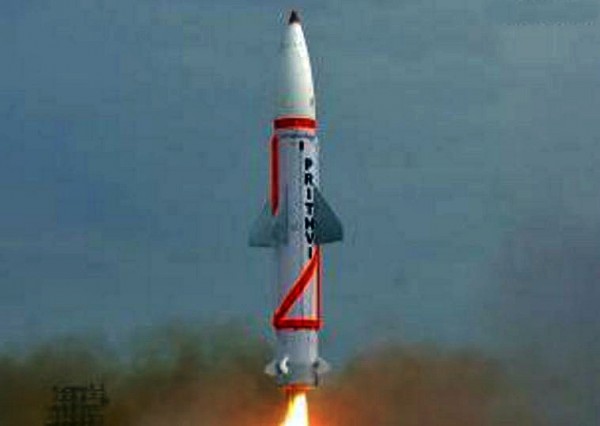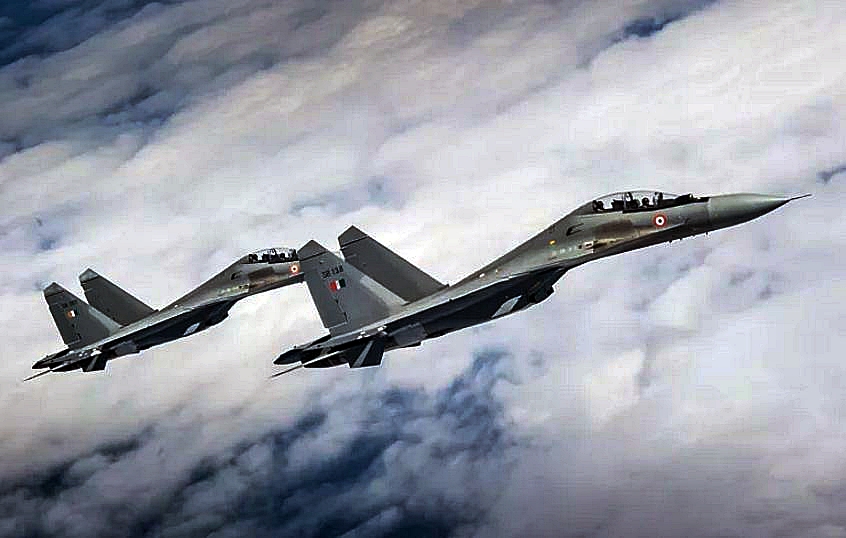Successful Test Launch for India’s Prithvi-II Nuclear Missile
| Arthur Dominic Villasanta | | Jun 02, 2017 11:34 AM EDT |
(Photo : Indian Army) Prithvi II launch.
The Indian Army reports the successful test launch of a Prithvi-II tactical surface-to-surface, short-range ballistic missile (SRBM), one of only two missile types India operates that can be armed with nuclear warheads.
It said the test on June 2 at the Integrated Test Range (ITR) at Chandipur in Odisha was part of its regular training exercises. The missile, which can deploy either a 500 kg or 1,000 kg nuclear or non-nuclear warhead, was fired from a mobile launcher.
Like Us on Facebook
The test was conducted by the Strategic Forces Command (SFC), a unit that reports to the Nuclear Command Authority (NCA). SFC is responsible for the management and administration of India's tactical and strategic nuclear weapons stockpile. SFC was organized only in 2003.
What makes the Prithvi family of SRBMs unique is they're the first home grown missiles developed under the government's Integrated Guided Missile Development Program (IGMDP) whose aim is to strengthens India's nuclear deterrence posture.
SFC has control over India's only two nuclear capable ballistic missile types: Agni and Prithvi.
Agni-I, Agni-II and Agni-III are directly controlled by SFC and have been deployed to the Indian Armed Forces. Agni-IV and Agni-V (which has a maximum range of 8,000 km) have both bees successfully tested.
On the other hand, Prithvi-I, Prithvi-11 and Prithvi-III have all been deployed with the armed forces. Prithvi-I is operated by the Indian Army and has a rage of 150 km. It's mounted on an 8 x 8 Tata Transporter Erector Launcher or TEL.
Prithvi-II is operated mainly by the Indian Air Force but also by the Indian Army. This short range missile can take its 500 kg warhead to a distance of 350 km. Prithvi-III is an anti-ship variant operated by the Indian Navy and can reach a maximum distance of 350 km.
Prithvi became operational with the SFC in 2003.
TagsIndian Army, Prithvi-II, short-range ballistic missile, Strategic Forces Command, Agni, Andrew Siemion]
©2015 Chinatopix All rights reserved. Do not reproduce without permission
EDITOR'S PICKS
-

Did the Trump administration just announce plans for a trade war with ‘hostile’ China and Russia?
-

US Senate passes Taiwan travel bill slammed by China
-

As Yan Sihong’s family grieves, here are other Chinese students who went missing abroad. Some have never been found
-

Beijing blasts Western critics who ‘smear China’ with the term sharp power
-

China Envoy Seeks to Defuse Tensions With U.S. as a Trade War Brews
-

Singapore's Deputy PM Provides Bitcoin Vote of Confidence Amid China's Blanket Bans
-

China warns investors over risks in overseas virtual currency trading
-

Chinese government most trustworthy: survey
-

Kashima Antlers On Course For Back-To-Back Titles
MOST POPULAR
LATEST NEWS
Zhou Yongkang: China's Former Security Chief Sentenced to Life in Prison

China's former Chief of the Ministry of Public Security, Zhou Yongkang, has been given a life sentence after he was found guilty of abusing his office, bribery and deliberately ... Full Article
TRENDING STORY

China Pork Prices Expected to Stabilize As The Supplies Recover

Elephone P9000 Smartphone is now on Sale on Amazon India

There's a Big Chance Cliffhangers Won't Still Be Resolved When Grey's Anatomy Season 13 Returns

Supreme Court Ruled on Samsung vs Apple Dispute for Patent Infringement

Microsoft Surface Pro 5 Rumors and Release Date: What is the Latest?












